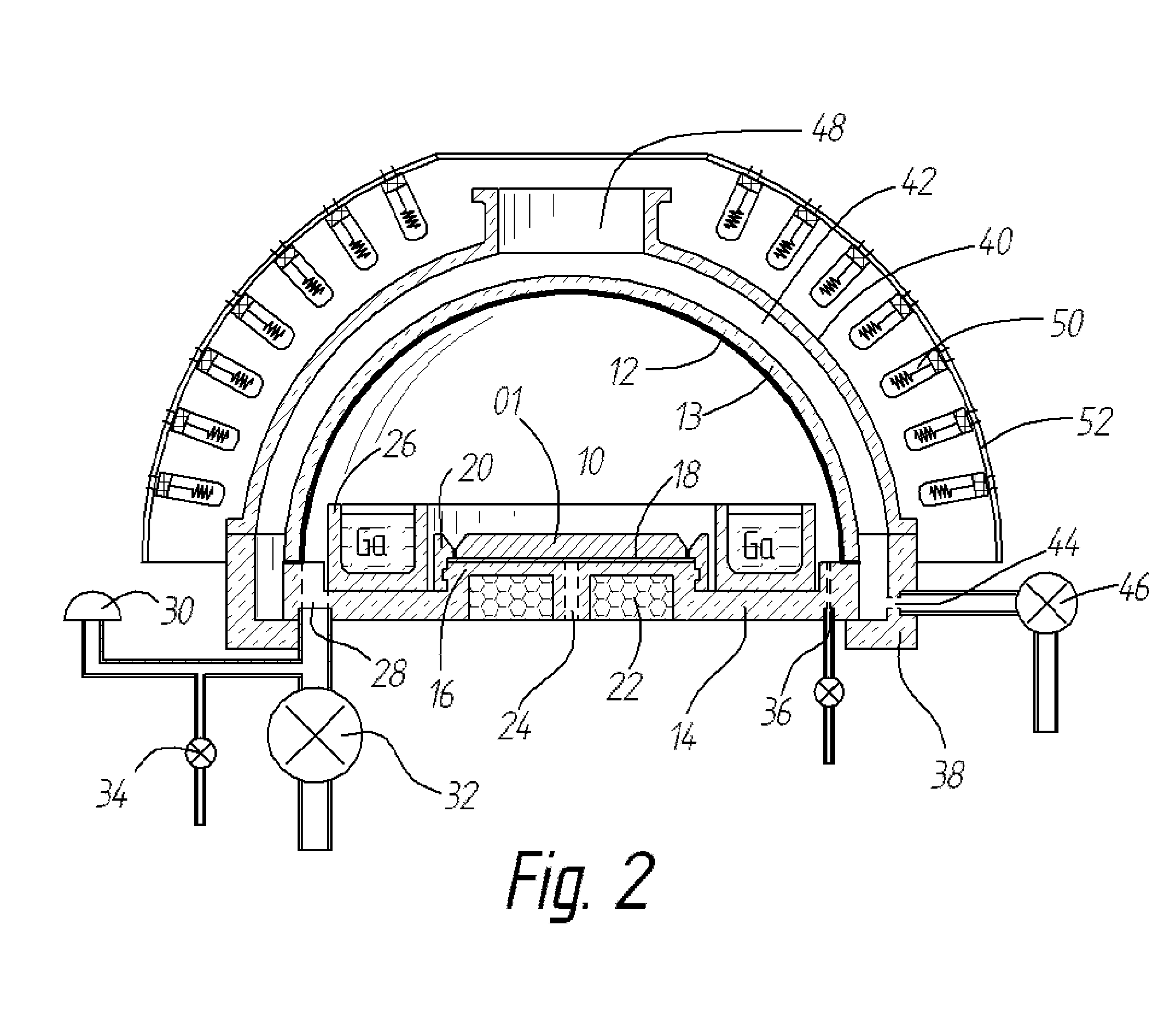Method and apparatus for crystal growth using a membrane-assisted semi-closed reactor
a semi-closed reactor and crystal growth technology, which is applied in the direction of crystal growth process, polycrystalline material growth, chemically reactive gases, etc., can solve the problems of high production cost of iii-nitride substrates, difficult growth of thick iii-nitride ingots, and similar defects
- Summary
- Abstract
- Description
- Claims
- Application Information
AI Technical Summary
Problems solved by technology
Method used
Image
Examples
embodiment
Preferred FIG. 2
[0041]A preferred embodiment of the membrane-assisted semi-closed (MASC) reactor of the present invention is schematically illustrated in the cross-sectional side view of FIG. 2. The reactor volume 10 is enclosed by a hydrogen-permeable membrane 12 and a base 14. The membrane 12 is selectively permeable to hydrogen gas and forms the walls and ceiling of the volume 10, while the base 14 forms the floor. The base 14 may be made of quartz, aluminum oxide, aluminum nitride, or other suitable ceramic. The membrane is attached to or formed or deposited onto a porous membrane support 13 that is permeable to all gases, not prone to react with the membrane 12 under normal operating conditions, and thick enough to structurally support the membrane 12.
[0042]The membrane support 13 may be made of a porous ceramic from the group that includes aluminum oxide, zirconium oxide, and any other suitable ceramics that can be formed as porous structural shapes. The membrane support 13 ma...
PUM
| Property | Measurement | Unit |
|---|---|---|
| temperature | aaaaa | aaaaa |
| temperature | aaaaa | aaaaa |
| temperature | aaaaa | aaaaa |
Abstract
Description
Claims
Application Information
 Login to View More
Login to View More - R&D
- Intellectual Property
- Life Sciences
- Materials
- Tech Scout
- Unparalleled Data Quality
- Higher Quality Content
- 60% Fewer Hallucinations
Browse by: Latest US Patents, China's latest patents, Technical Efficacy Thesaurus, Application Domain, Technology Topic, Popular Technical Reports.
© 2025 PatSnap. All rights reserved.Legal|Privacy policy|Modern Slavery Act Transparency Statement|Sitemap|About US| Contact US: help@patsnap.com



